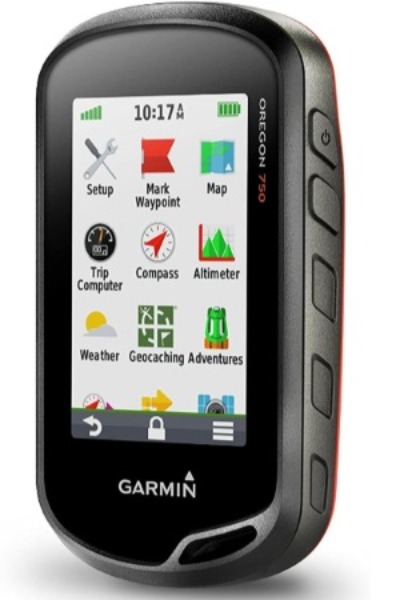If adventure is in your blood, then a handheld GPS device should always be in your backpack to stop you getting lost, while allowing you to navigate your route in the countryside. For handheld devices, Garmin have the monopoly. While there are other handheld GPS models on the market, non compare to what Garmin provide.
The idea behind a handheld GPS unit is to stop you having to look at paper maps and a compass along your route, and allow you to enjoy the journey. Instead, of stopping every few hundred meters along the route, you’re handheld GPS with multiple features, allows you to quickly check important updates without unpacking your backpack for those paper maps.
Garmin Oregon 750T Review
The Garmin Oregon 750T is Gamin’s replacement for the out-going 700. While there is very little difference between the older 700 and the newer 750T, the changes that have been made, are simply brilliant and change the gps from a basic handheld gps, to a real gps that you can actually use.
The key problem with the Oregon 700T, was the lack of memory and maps. There was simply never enough room on the memory-card to keep more than a single map. The 750 and 750T have taken not of this problem and increase both the size of the memory, and in the case of the 750T, Topo Active maps of Europe.
Garmin Oregon 750 Review


Oregon 750T
The 750T comes as standard with dimensions of 6.1 x 11.4 x 3.3 cm, while the the display is 7.6 cm using a 240 x 400 pixels, transflective colour TFT touchscreen. The unit weighs 209.8 g with batteries included. Batteries are either a rechargeable NiMH pack rechargeable AA can also be used. Battery life is up to 16 hours, depending on use and screen brightness and the unit is totally waterproof (Waterprroof rating: IPX7).
Once you switch on the Oregon 750T, the unit switches on quickly showing the easy-to-use menu interface allowing you to pick your use. As we discussed above, memory has been substantially increased allowing not only better maps, but also map data including 10,000 waypoints, geocaching, tide, sunset, moon tables and 250 routes with up to 20,000 route points.
Camera
Unlike the Oregon 700, the 750T comes with a camera built-in as standard. While its probably not the best camera in the world today, it’s a eight megapixel camera with digital zoom and autofocusm, it also comes with a geographical location feature.
This allows you to take a picture and mark exactly where that picture is located on the map. This way you can accurately check where your pictures where taken from, once you’ve returned home.
Navigation
The Oregon 750T handheld provides complete navigation and tracking using GPS and GLONASS (altimeter, barometer and compass) sensor capabilities. The device also comes with a built-in altimeter that helps to provide elevation data to accurately measure ascent and descent, while the barometer can be used to predict weather changes by showing short-term trends in air pressure.
The device also comes with a 3-axis electronic compass that helps to keep your bearing, whether your moving, or just sat at the top of a hill planning your next route. If you just want to return back the way you came, the Oregon 750T comes with a TracBack feature.
Final Thoughts
The Oregon 750T is a decent bit of kit that peforms well and comes with some decent features that you will use. Yes, like all handheld GPS units these days, it’s a Garmin, but they do make great units.
Take Garmin’s BaseCamp software as an example. It lets you view and organise maps, waypoints, routes and tracks all from the comfort of your home. This totally free bit of software works fantastically, and even better, you can combine it with a paid subscription to BirdsEye Satellite Imagery that allows you to transfer an almost unlimited amount of satellite images to your device.







